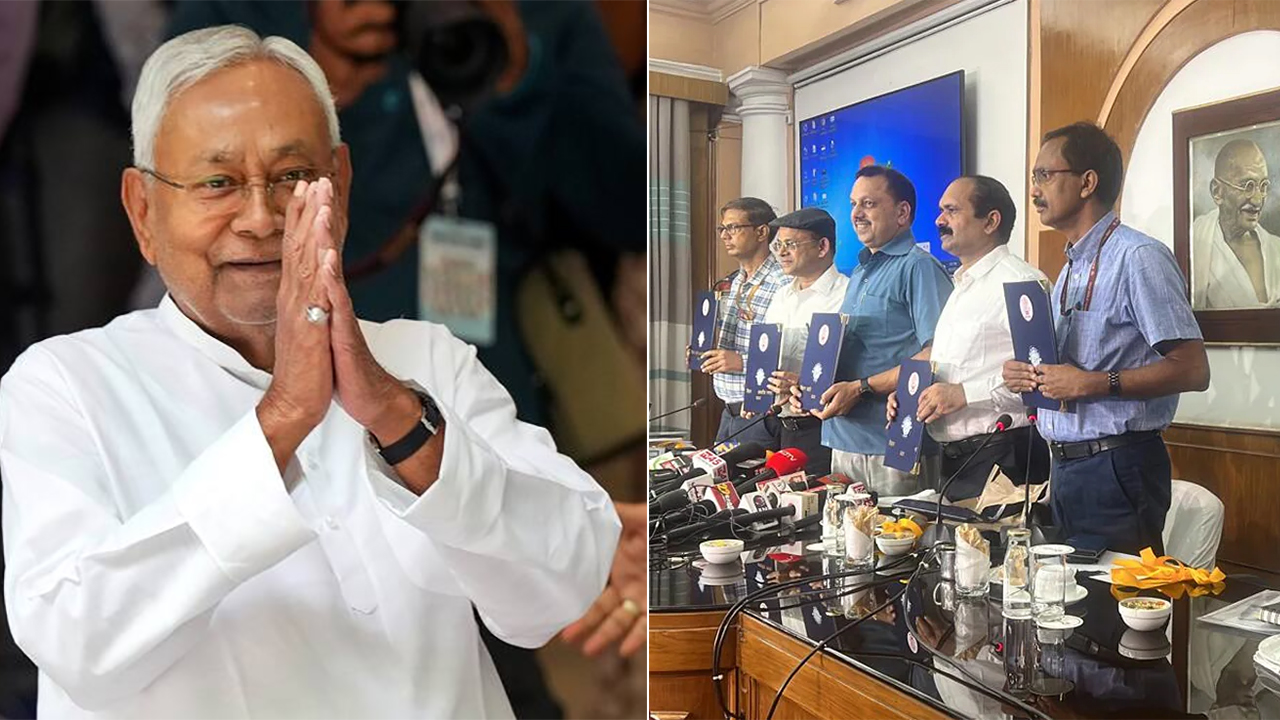Groundxero : 2 October, 2023
The Bihar government on Monday released findings of the caste survey that put OBCs and Extremely Backward Classes (EBCs) at a whopping 63.13 per cent of the state’s population of 13.07 crore and the upper castes at 15.52 per cent. The findings of the survey just a few months before the general elections are politically significant. It will surely amplify the call for a nationwide caste census, and may open the door to challenging the 50% ceiling on caste reservations.
While releasing the survey report titled Bihar Jaati Adharit Ganana (Bihar caste based survey), the Bihar government said “it’s only a compiled data and no analysis of it has been done yet”. According to the report, the Other Backward Class (OBC) population in Bihar State is 27.1286% while the Extremely Backward Class (EBC) comprises 36.0148%. Among the OBC group, the Yadavas comprise 14.26% while the Kushwahas and Kurmis form 4.27% and 2.87% respectively. The Scheduled Caste (SC) population in the State is at 19.6518% while the Scheduled Tribe (ST) population is 1.6824%. The General Caste population stands at 15.5224%. Hindus comprise 81.9986% of the population of Bihar while the Muslim share is at 17.7088%. The survey collected the socio-economic data of 29 million registered households in the 38 districts of Bihar.
Ever since the Nitish Kumar government in Bihar began its caste count in January, it was marked by controversy. Questions were raised on whether the exercise was being conducted only for political gains, given that the Lok Sabha elections are a few months away and whether it will prove useful for the social and economic development of the Other Backward Classes (OBC). PIL’s were filed in the court to stop the survey.
On August 1, in a significant judgement, the Patna High Court allowed the Nitish Kumar government to continue with the survey. The HC observed that the action of the State Government was perfectly valid, initiated with due competence, and in the furtherance of a ‘compelling public interest’. The Supreme Court while hearing a batch of petitions challenging the Patna High Court’s verdict upholding the Bihar government’s ongoing caste survey on August 14 declined a plea seeking a stay on the controversial survey.
While the Bihar state unit of the BJP has backed the proposals to conduct the caste census and have even joined other state parties to meet the Prime Minister to demand a nationwide caste survey, the central leadership of the party has been shying away from it. Hours after the Bihar government released details of its caste-based survey, Prime Minister Narendra Modi, without referring to the survey or any specific party, accused the opposition of “trying to divide the country in the name of caste”. Lashing out at the opposition for “playing with the feelings of the poor”, the Prime Minister called any attempt at “division on caste lines” a “sin”.
Congress leader Rahul Gandhi reacting to the survey report said on Twitter (now X) : “The caste census of Bihar has revealed that OBC (other backward classes), SC and STs are 84 per cent there. Out of 90 secretaries of the Central Government, only three are OBCs, who handle only 5 per cent of India’s budget.” “Therefore, it is important to know the caste statistics of India. The greater the population, the greater the rights – this is our pledge,” he stated. The Congress party reiterated its demand that the union government conduct a national caste census at the earliest. Congress General Secretary Jairam Ramesh said on X : “The UPA-2 government had, in fact, completed this Census but its results were not published by the Modi government. Such a Census has become essential for providing a firmer foundation for social empowerment programmes and for deepening social justice.” The Congress-led UPA government had in 2011 conducted a socio-economic caste census but the caste data was not published by the Modi government, which came to power in 2014. Karnataka too conducted a caste-based survey in 2014 but did not make the data public.
Whatever be the motive of the Nitish Kumar government, is an undeniable fact that such data is essential for the government to devise policies and programs targeting specific communities for social empowerment and for deepening social justice. The survey validates the widely held belief that the share of the OBC population, in both Bihar and elsewhere is much more 27%, which is the quantum of reservation that these castes get in government jobs and admissions to educational institutions. Following the release of the survey report, opposition parties will now increase pressure on the Modi-led BJP government to conduct a national caste census, and use the data to give a rallying call for social justice and development with justice to counter the BJP’s propaganda on Uniform Civil Code and proposed inauguration of the Ram Temple in Ayodhya in January.
Whether we will again see the revival of the ‘Mandal’ politics by the opposition to counter the BJP’s ‘Kamandal’ politics, and how successful it will be this time, the next few months will tell.

